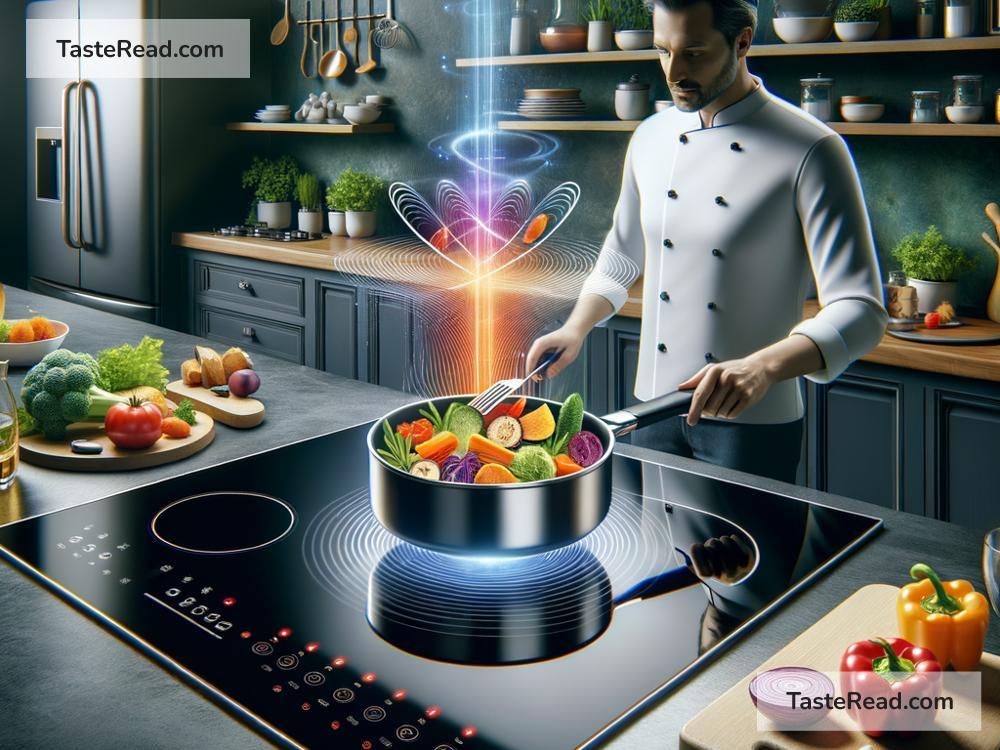The Science of Cooking with Magnetic Fields: Techniques and Tips
Cooking has always been about heat—fire, ovens, stovetops, and even microwave radiation. But a newer and innovative method of cooking is gaining popularity: cooking with magnetic fields. This fascinating technique is efficient, precise, and safe, but it might sound a little bit like science fiction. Don’t worry—it’s easier to understand than you might think! Let us take you on a journey into the science of cooking with magnetic fields, explain how it works, and share tips to get the best results.
What Is Magnetic Cooking?
Magnetic cooking is mostly accomplished using an induction cooktop. Induction cooking is a smart and modern culinary tool powered by science. Instead of using gas flames or electric heating coils, induction cooktops use magnetic fields to generate heat directly in the cookware. How does this work? Let’s break it down.
Inside the induction cooktop, there are coils of wire. When electricity flows through these coils, they create a fluctuating magnetic field. This magnetic energy interacts with the metal in your cookware, producing heat through what’s called electromagnetic induction. The cookware becomes the heat source instead of the stovetop itself. This clever system delivers heat faster, uses energy efficiently, and gives you more precise control.
How Is It Different from Traditional Cooking?
Traditional stoves—whether gas or electric—heat the air around them or a heating element, which then transfers warmth to the pan. With induction cooking, the heat is generated directly in the pan. This has several advantages:
-
Speed: Because the heat is created instantly in the cookware, induction cooking is quicker than traditional methods. Water boils faster, and food cooks sooner.
-
Energy Efficiency: Less heat is lost into the surrounding air, so induction cooking uses less energy, saving electricity and helping the environment.
-
Safety: The induction cooktop stays cool, as the magnetic field heats only the cookware. This means less risk of burns and no open flames.
-
Precision: Induction cooking responds immediately to changes in temperature. You can switch from boiling water to simmering with a simple turn of the knob, giving you greater control over how your food cooks.
Choosing the Right Cookware
One important thing to note about induction cooking is that it only works with certain types of cookware. Since induction relies on magnetic fields, your pots and pans need to be made of materials that can interact with magnets. Common options include:
-
Cast Iron: Cast iron pans are magnetic and ideal for induction cooking. They hold heat well but can be heavy.
-
Stainless Steel: Many stainless steel pans work with induction, though you’ll need to check if yours is induction-compatible. Look for markings or test with a magnet.
-
Carbon Steel: Lightweight and sturdy, these are another great option.
Cookware made from glass, aluminum, or copper won’t work unless it’s been modified with a magnetic coating. Always check your cookware for compatibility before trying it on an induction cooktop. To test, simply stick a magnet to the bottom. If it sticks, it will work.
Techniques for Cooking with Magnetic Fields
Induction cooking might be powered by science, but it’s still cooking, so the culinary techniques aren’t much different. However, here are a few tips to master this method and take advantage of its precision and speed:
-
Get Comfortable with Temperature Control: Induction cooktops respond incredibly quickly to adjustments. Try playing around with changing heat levels to get a feel for how fast food reacts. For example, you might notice your stir-fry goes from a gentle sizzle to a quick sear in mere seconds.
-
Use Flat-Bottomed Cookware: Since the magnetic field works best when your cookware is in direct contact with the cooktop, flat-bottomed pans offer the most efficient heating.
-
Watch the Timing: Food cooks faster on induction surfaces. Keep an eye on your recipes so you don’t accidentally overcook or burn anything. For instance, if a recipe suggests simmering sauce for 10 minutes, it might take less time with induction.
-
Keep the Cooktop Clean: Since the cooktop itself doesn’t heat up, spills don’t burn onto its surface. Cleaning is easy—just wipe it down! However, keeping it clean is important because leftover food particles can interfere with pan contact.
-
Plan for Precision Tasks: Induction cooking shines when you need finesse, such as melting chocolate without scorching or making delicate sauces like hollandaise and custards.
Is Induction Cooking Right for You?
If you like speed, precision, and energy savings, induction cooking might be perfect for your kitchen. It’s especially handy for busy households or anyone who enjoys trying new cooking technologies. Plus, the reduced heat loss and absence of open flames make it a safer choice.
However, it’s worth knowing that induction cooktops and compatible cookware can be pricier upfront than traditional options. Still, many people find the benefits are worth the investment in the long run.
The Future of Magnetic Cooking
Cooking with magnetic fields is a great example of how science can transform everyday activities like making dinner. It’s not just about making life easier—it’s about making cooking smarter, safer, and kinder to the environment. Whether you’re a casual chef or a passionate foodie, this technology can open up new possibilities in the kitchen.
So, if you’re ready to try something new and embrace science in your cooking, induction cooking might just be what you’re looking for. With the right cookware and a bit of practice, you’ll be whipping up meals faster and more efficiently—all thanks to the power of magnetic fields. Who knew science could taste so good?


